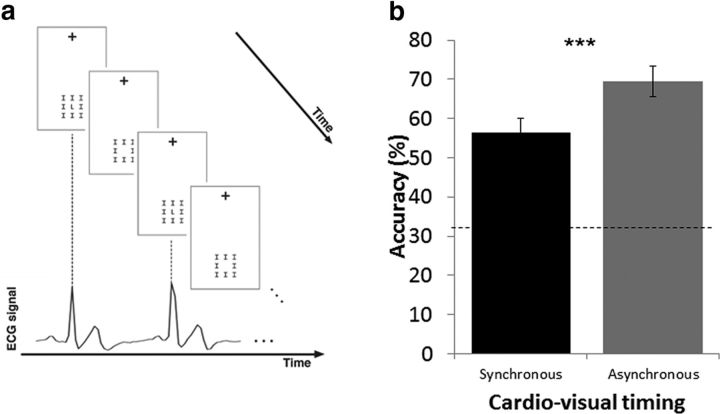Figure 3.
Crowding experiment. a, Schematic of the crowding paradigm. Participants gazed on the fixation cross at the top of screen and were presented with a letter-shaped visual target that flashed either synchronously or asynchronously with respect to their heartbeat and was surrounded by an array of eight similar flankers. Participants were asked to discriminate the target as quickly and accurately as possible (three-alternative forced choice task). b, Results of the crowding experiment for distance 1. Participants showed reduced accuracy for the targets flashing synchronously compared with those flashing asynchronously to the heartbeat. Error bars indicate SEM (***p < 0.001).

